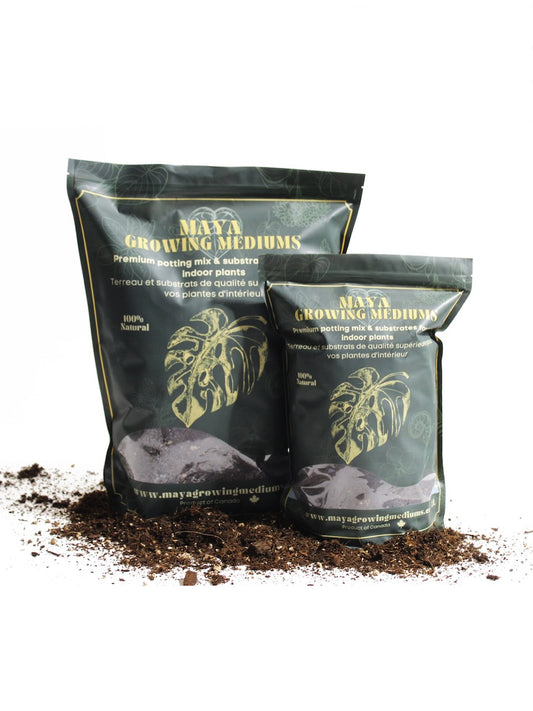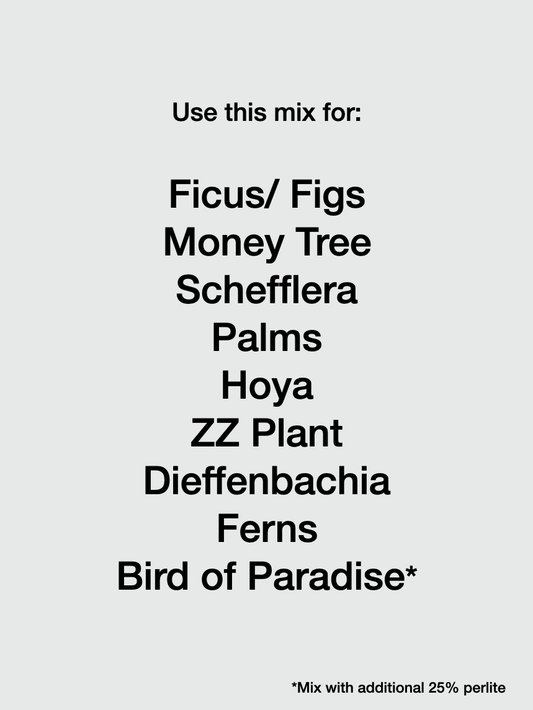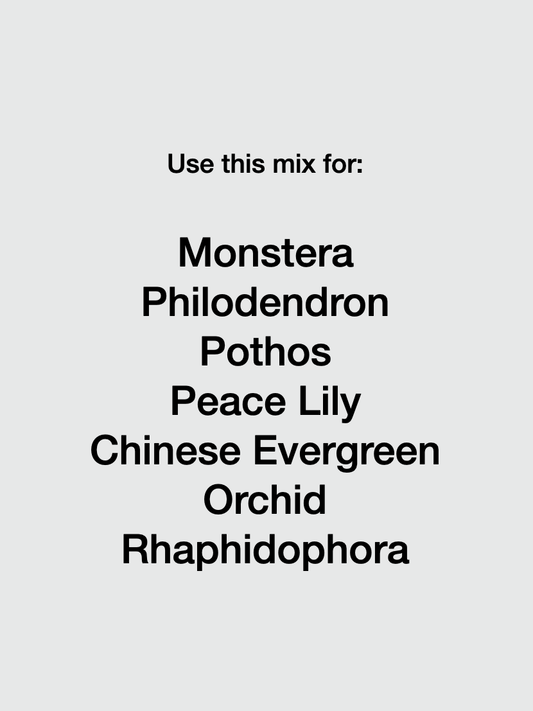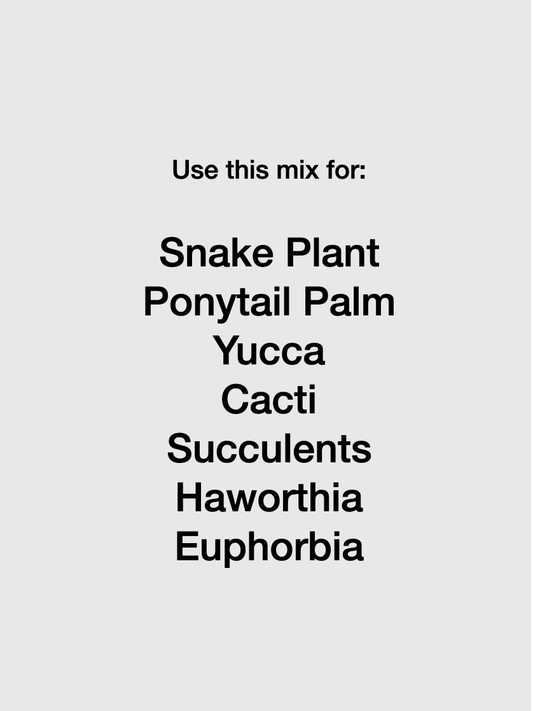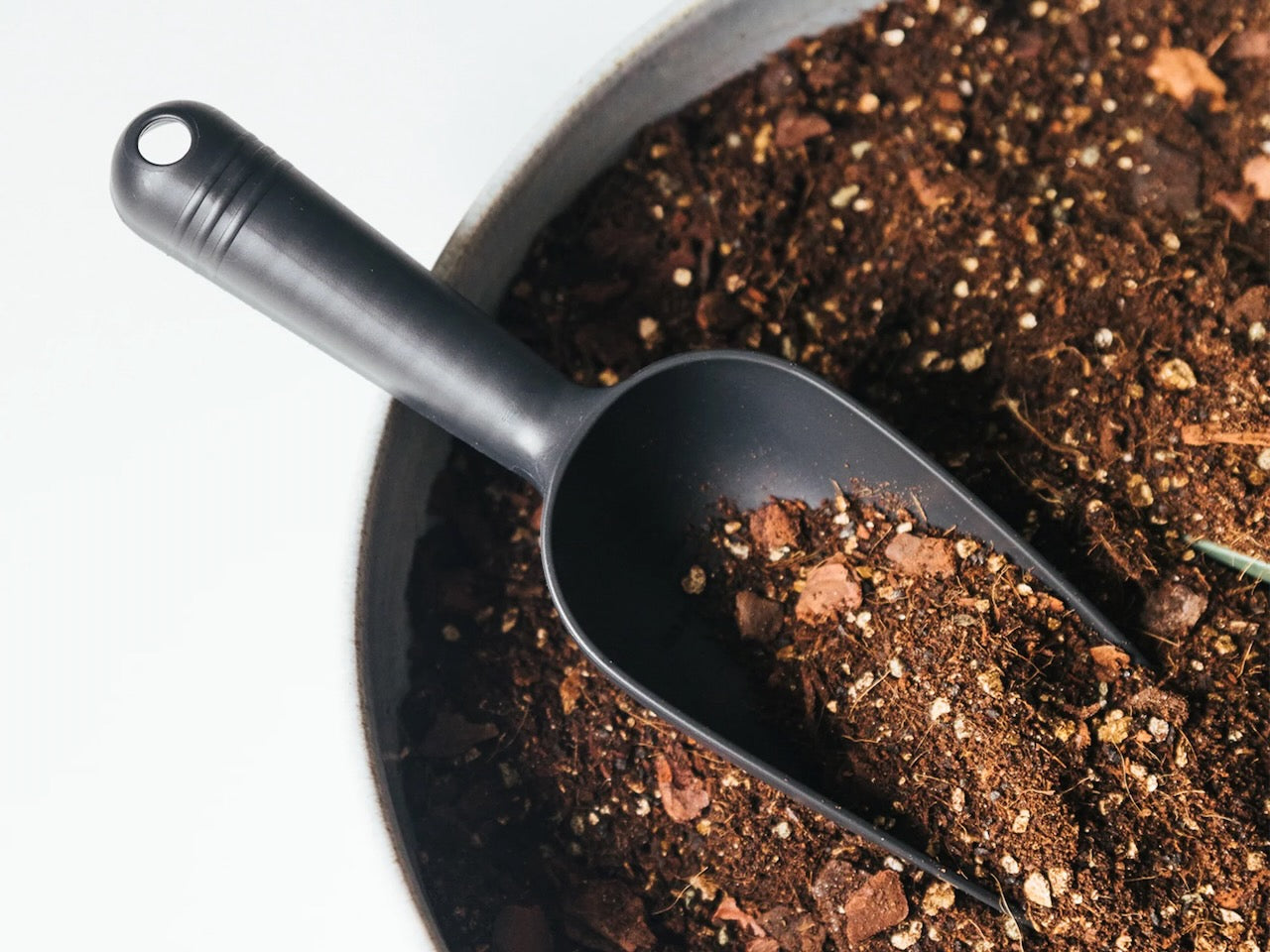
Repotting
Most houseplants will eventually outgrow the planters that they came in. Know what to look for and how to successfully repot your plant with our repotting guide.
Common Repotting Questions
How can I know if my plant needs to be repotted?
Here are three ways to determine if it your plant may be ready for fresh soil, a bigger pot, or both.
1. Most urgent: Your plant's soil is not retaining water for very long.
As plants need water for their day-to-day functions and cannot survive without it for long, this is fairly urgent and you'll want to address this asap.
Why might this happen and how can I resolve it?
There may not be enough organic material in your soil
- As your plant grows, it uses up decaying organic matter in the soil, leaving behind materials that don't decompose and that don't hold water as well, like sand, perlite, etc.
- The longer your have your plant in the same soil, the faster it will dry and the more likely your plant will not have access to water for periods.
- In this case, fresh soil that can retain water for longer is needed.
The roots may be taking over the pot
- Your plant's roots can also grow to fill more of the pot leaving less room for soil and water. Soil that appears to dry out quickly between waterings can also indicate that the pot is full of roots and has little to no soil to hold onto water for the plant. In some cases, you may also notice roots coming out of the top or bottom of the pot.
- In this case, fresh soil and a larger pot to accommodate the extra roots is needed.
2. Less urgent: It has been more than 2-3 years since the plant received fresh soil.
It will take a long time for a plant to die from old soil but it would be a good idea to add some fresh soil to your plant to-do list in the upcoming months.
- After being in the same soil for a long time, there will be fewer nutrients than it once had as the plant will have used them up. Your plant can still survive but it will slowly decline - leaves may become smaller and less vibrant and growth will slow.
3. Least urgent: There are roots coming out of the base of your pot BUT your plant is growing normally and the soil is not drying rapidly.
- In this case, your plant can be repotted but it is not very urgent.
- Fresh soil and a larger pot to accommodate the extra roots is needed.
Why is this not as urgent as the internet says?
- Roots are always growing and trying to fill space. Sometimes, a few of these roots will find their way out of the base of the pot, but this is not always a bad thing for the health of your plant if it is the only factor.
- Many houseplants like pothos, monstera, and ficuses actually do better if confined to a smaller pot.
What size pot should I use when repotting?
- When your plant is ready for a bigger pot, use a pot with a diameter approximately 1-3in (2.5-7.5cm) larger than its current pot.
- The larger your existing pot, the larger the increase in diameter can be without risking the health of your plant. e.g. If the plant's current pot is very small, 2.5" for instance, upsizing to a 3-3.5" (1 inch larger) pot would be sufficient but a 5.5" (3 inches larger) pot would be too large. But, if the plant's current pot is very large, 14", upsizing to a 17"(3 inches larger) pot would be just fine.
Why is it important not to increase the size of the pot too much?
- Increasing the size of the pot will increase the amount of soil and the volume of water that the pot can hold. If your plant and its roots are not mature enough to use up all the water in the pot in a timely manner, bacteria could build due to the standing water causing root rot.
- Many houseplants like pothos, monstera, and ficuses actually do better when confined to a smaller pot.
Does it matter if my new pot has a drainage hole?
YES. YES. YES. We highly recommend using a pot with drainage and its why all of the pots that we sell have a drainage hole.
Why do drainage holes matter?
- There is no faster way to kill a plant than to have it sitting in a pool of water.
- When you pot your plant into a planter that has no hole and no way for excess water to drain, water will pool at the base of the inside of the pot and eventually it will fill with enough reach the roots. Once this happens, bacteria will begin to build, the roots will rot and the plant will die.
Should I put rocks at the base of my pot when repotting?
No, we do not recommend this.
If you wish to add something to the base of your pot to absorb excess water and improve drainage, porous materials like Leca Clay Stones are much more effective.
Background
- The advice to add rocks to the base of a pot is often given to provide space between the rocks for excess water to pool, but there is no evidence that this works as intended.
- In our research and experiments, we have found that adding rocks as a base layer actually accomplishes the opposite effect. The rocks reduce the space for soil that can absorb water and lifts the water table closer to the plant's roots, i.e. the water will not actually drain into the spaces between the rocks. Because, well - science.
Tools: Repotting
Hover over our soil options to choose the mix that's right for your plant.
-
Tropical / General Soil Mix
Regular price From $15.00 CADRegular priceUnit price / per -
Aroid Soil Mix
Regular price From $17.50 CADRegular priceUnit price / per -
Cactus & Succulent Soil Mix
Regular price From $15.00 CADRegular priceUnit price / per

